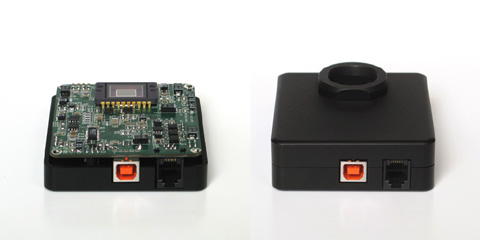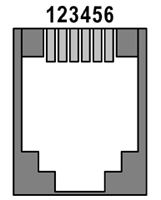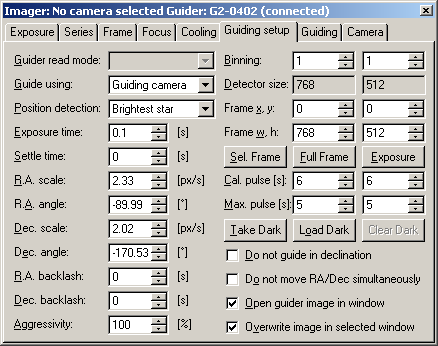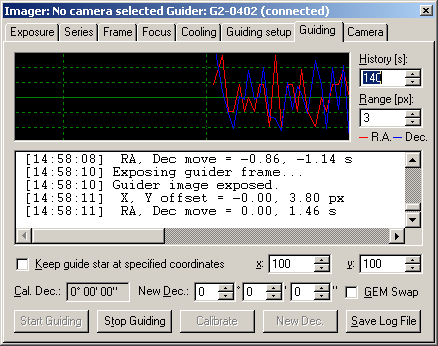|
CCD detector Sony ICX285AL, used in the G1-1400 camera, is well
know by its high sensitivity and low noise among astronomers. While
its ceramic package is substantially bigger compared to other Sony ICX
CCD chips of the similar size, which usually leads to bigger camera
body, G1-1400 camera dimensions were kept the same like other G1
cameras. Also other features like low weight, connection through
single USB cable (G1-1400, as well as other cameras of this series, is
powered from the host PC over USB cable) and overall easy operation
are the same.

G1-1400 camera offers greatest CCD detector from all G1
cameras G1-1400 cameras are offered in monochrome as well as color
variants:
| Model |
CCD detector |
Chip architecture |
Color filters |
Resolution |
Pixel size |
Image area |
Download time |
| G1-1400 |
ICX285AL |
progressive |
no |
1392 × 1040 |
6.45 × 6.45 μm |
9.0 × 6.7 mm |
~ 0.18 s |
| G1-1400C |
ICX285AQ |
progressive |
RGBG (Bayer) |
1392 × 1040 |
6.45 × 6.45 μm |
9.0 × 6.7 mm |
~ 0.58 s |
Image digitization speed can be choses between
2.5 MPx/s and
8 MPx/s. The whole image can be
downloaded in a fraction of second, which is particularly important
for automatic guider. Analog/Digital converter resolution is
16 bits (65,536 levels), so camera electronics
dynamic range fully covers CCD detector dynamic range.
The CCD detector is equipped with electronic shutter, which allows
capturing of very short exposures (shortest exposure is 125 μs). Longest exposure is on
the other side limited only by the detector saturation, which allows
automatic guiding using much dimmer stars compared to the best web or
TV cameras. When coupled with a guiding telescope with focal length
around 50 or 75 cm and diameter around
10 cm, G1-1400 can detect guiding star
after several seconds of exposure time almost anywhere on the night
sky.
As well as other cameras of this series also the G1-1400 is
equipped with standard “autoguider” port. This port allows
direct connection of camera and telescope mount compatible with this
standard, introduced by SBIG. The G1-1400 camera has mount switching
circuits isolated from the rest of the system (camera itself, USB and
host computer), which enhances reliability and noise resistance.
 |
| 1 |
R.A. + (Right) |
| 2 |
Dec + (Up) |
| 3 |
Dec – (Down) |
| 4 |
R.A. – (Left) |
| 5 |
Common (Ground) |
| 6 |
Not connected |
|
The guiding itself is performed by the SIMS (Simple Image
Manipulation System) software or by other camera control software, for
which G1 camera driver exists (e.g. MaxIm DL or AstroArt). Automatic
guiding running in SIMS utilizes the computational power of modern PCs
to achieve sub-pixel precision of star position, so it can guide the
very precisely even if a guiding telescope with short focal length is
used.

Guiding setup tab in the CCD Camera tool of SIMS
software SIMS software performs not only guiding, but also allows automatic
calibration independently on camera orientation, recalculates
calibration parameters when the telescope is moved to different
declination so no calibration is needed, can keep the guide star on
defined pixel coordinates, which allows keeping of the guide star on
the same position during subsequent observations etc. Differences from
ideal positions are displayed graphically and all guiding actions
including measured differences and performed corrections are logged
into text window and can be saved into text file.

Guiding tab in the CCD Camera tool of SIMS
software | 